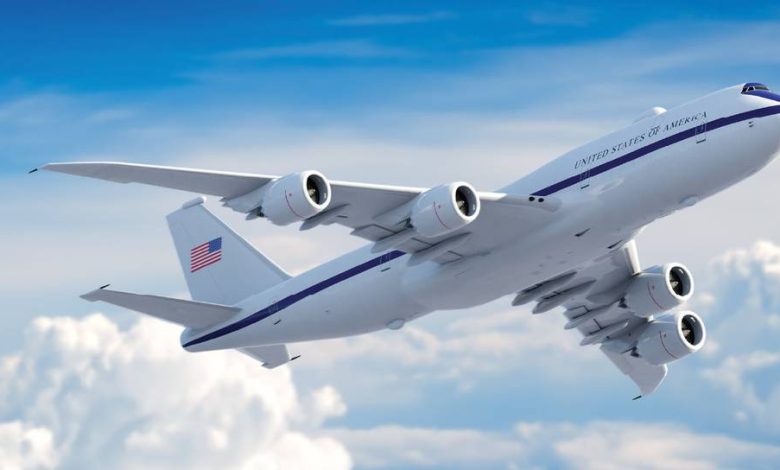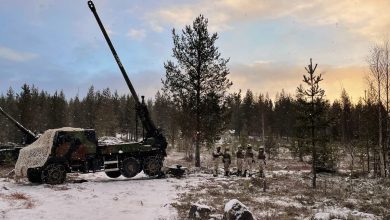Sierra Nevada gears up to build US Air Force ‘doomsday’ planes

Sierra Nevada Corp. is preparing to receive its first commercial passenger jet to be modified into the Air Force’s next “doomsday” planes — and readying for what it hopes will mark a new era for the mid-size defense contractor.
Brady Hauboldt, SNC’s vice president of business development, told Defense News May 29 the first of five Boeing 747-8s that will become the Survivable Airborne Operations Center, or SAOC, will arrive at its Dayton, Ohio, facility this summer.
Over the next dozen years, the SAOC will gradually replace the Air Force’s aging E-4B Nightwatch, or National Airborne Operations Center aircraft. If a nuclear war or other catastrophe were to occur that destroyed the military’s command-and-control centers on the ground, the president would direct forces through an airborne E-4B or SAOC.
But the Air Force only has four E-4Bs, which have been flying since the 1970s, and they are near the end of their service lives. The service announced in April it had awarded SNC a $13 billion contract to build SAOC and replace the E-4B by July 2036.
The deal is the largest single contract SNC has received in its more than six-decade history as a mission systems integration and aircraft modification company, Hauboldt said. The company hopes its work on SAOC will open opportunities to even larger contracts and major programs in the future.
SNC decided to shoot for larger growth in recent years, he said. The company ramped up its investment in digital engineering tools and new infrastructure and facilities, standing up an Aviation Innovation and Technology Center in Dayton, Ohio, which includes large hangars where the 747s will be modified into SAOCs.
SNC’s first new hangar in Dayton opened a year and a half ago. The second will be done this summer, and three more hangars and other support facilities will follow.
Developmental engineering on SAOC will largely be based at SNC’s facility near Denver, Colorado, and other new offices are being set up in locations such as Dallas, Texas. This will allow SNC to take advantage of hiring pools in multiple locations across the country, as the company adds about 1,000 workers for the program, Hauboldt said.
“All of that investment in the digital tools, the employees and the facilities for SNC have put us in a position to take on this kind of a project, like SAOC,” he added.
Antennas, new computers — and radiation shielding
Earlier in May, Reuters reported that SNC will buy five Boeing 747-8 planes from Korean Air to convert into flying operations centers, with the last scheduled for delivery in September 2025. Hauboldt told Defense News these five aircraft are all the company needs to finish the engineering and manufacturing development requirements of SAOC, but said SNC will buy more planes if the Air Force wants to further expand its fleet.
Hauboldt said SNC has inspected the planes, the oldest of which was delivered in 2015, and found Korean Air has kept them in excellent condition.
“They’ve been maintained in tip-top shape,” Haubold said.
SNC is using a fully digital process to design SAOC, he said, and the Air Force will own those digital models. Hauboldt said the digital models, along with the open systems architecture, will make it easier for the Air Force to upgrade the planes in the future.
The structural modifications to turn the 747s into airborne command center will include installing communications antennas throughout the aircraft, a galley for long-haul flights, the mission systems where the crew will carry out their jobs, and adding the wiring and infrastructure to support those systems, Hauboldt said.
But one of the most critical upgrades will be to harden the plane to withstand radiation and electromagnetic pulses it might encounter from a nuclear blast. Lockheed Martin’s Skunk Works will conduct this work as a subcontractor on the program, Hauboldt said, as well as performing other work on SAOC.
Skunk Works “bring[s] a lot of expertise in integrating advanced capabilities on airframes — in this case, the radiation hardening,” Hauboldt said. “They have an experience base that SNC has less experience on, so we added them to the team.”
The planes will keep their General Electric-made GEnx-2B engines, he said, and Rolls-Royce will provide the aircraft’s auxiliary power systems. Collins Aerospace, which Hauboldt called a leader in the defense industry on nuclear command, control and communications systems, will also help build SAOC.
In addition to being a fresher air frame than the half-century old E-4Bs, Hauboldt said, the new SAOC will benefit from having modern, user-friendly computers and other technologies installed, and the easy modification that comes from having an open architecture structure.
The Air Force was focused on keeping down the lifecycle costs to operate and sustain SAOC, Hauboldt said — particularly after the high maintenance cost of the E-4B.
So SNC tailored its proposal to address those concerns by using open systems architecture and offering the Air Force a “robust” data rights package — something the Air Force has found difficult to obtain from contractors on other aircraft such as the F-35.
Hauboldt acknowledged that could mean, one day, that another company could win the contract to sustain the program. But he said SNC is confident that it can do the job well enough and efficiently enough to keep the job in the future.
Obtaining data rights for SAOC is “going to pay great dividends for the U.S. Air Force and the DoD for decades,” Hauboldt said. “We recognized early on that the Air Force valued data rights — in other words, the ability to cost-effectively sustain and modify the aircraft. We were willing, as a company, to listen and offer them what they asked for.”
Stephen Losey is the air warfare reporter for Defense News. He previously covered leadership and personnel issues at Air Force Times, and the Pentagon, special operations and air warfare at Military.com. He has traveled to the Middle East to cover U.S. Air Force operations.







